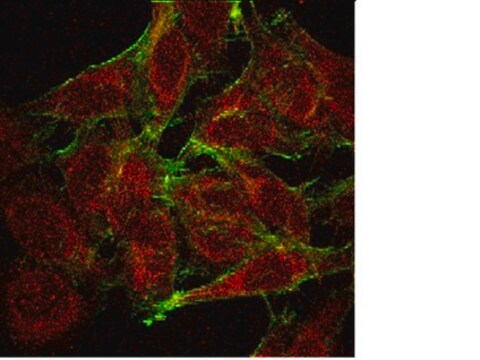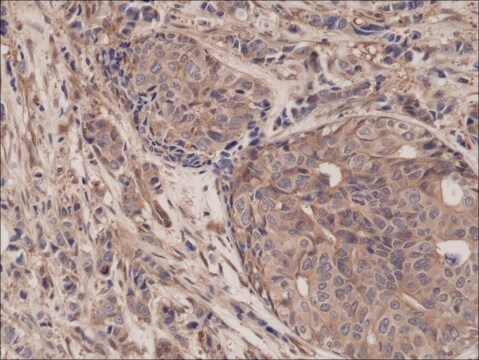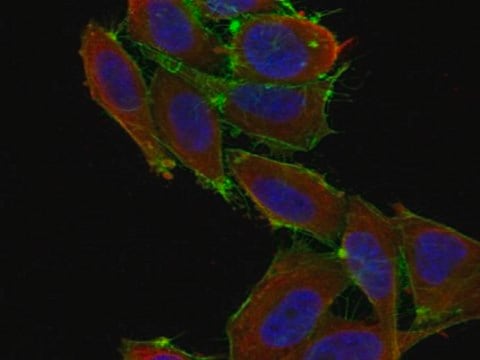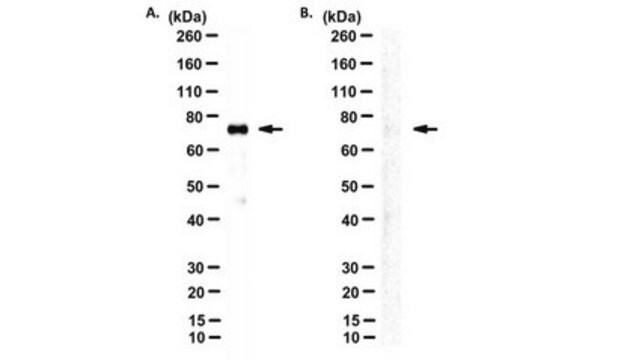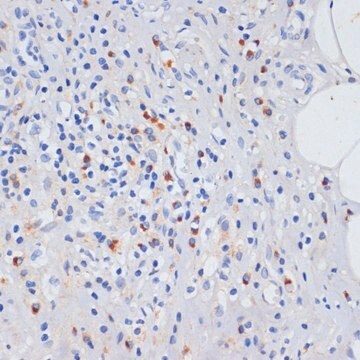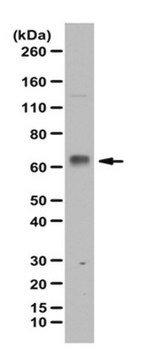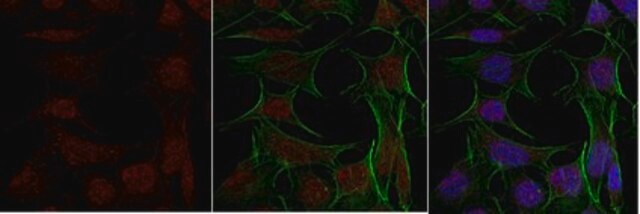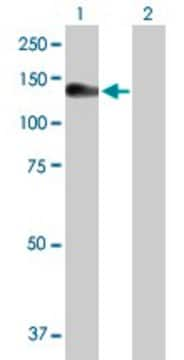MAB3026
Anti-NFκB Antibody, p65 subunit, active subunit, clone 12H11
clone 12H11, Chemicon®, from mouse
Synonym(s):
Rel A
About This Item
Recommended Products
biological source
mouse
Quality Level
antibody form
purified immunoglobulin
antibody product type
primary antibodies
clone
12H11, monoclonal
species reactivity
human, rabbit, rat
species reactivity (predicted by homology)
mouse
packaging
antibody small pack of 25 μg
manufacturer/tradename
Chemicon®
technique(s)
electrophoretic mobility shift assay: suitable
flow cytometry: suitable
immunocytochemistry: suitable
immunofluorescence: suitable
immunohistochemistry (formalin-fixed, paraffin-embedded sections): suitable
western blot: suitable
isotype
IgG3
NCBI accession no.
UniProt accession no.
shipped in
ambient
storage temp.
2-8°C
target post-translational modification
unmodified
Gene Information
human ... NFKB1(4790)
General description
Specificity
Immunogen
Application
A 1-10 μg/mL concentration of a previous lot was used in immunofluorescence.
Immunohistochemistry (paraffin sections):
A 5-10 μg/mL (APAAP) concentration of a previous lot was used in immunohistochemistry.
Immunohistochemistry (frozen sections):
A 5-10 μg/mL (APAAP) concentration of a previous lot was used in immunohistochemistry.
Immunohistochemistry:
The clone 12H11 works best in fresh frozen or acetone fixed human tissues, however some groups have had reactivity in traditional formalin fixed tissue when the tissue is of human origin. It is recommended that ABC or enhanced detection systems be employed for the best visualization in either acetone or formalin fixed tissues. The antibody reacts with human tissues best. Rat tissue will also react but at a lower affinity, and the antibody does not react with mouse, other species have not been examined. Microwave citric acid buffer or trypsin digestion antigen recovery have both been successful with 12H11 on formalin fixed tissues.
Western blot: 5-10 µg/mL (ECL)
Electrophoretic Mobility Supershift Assay:
A 0.5-1 μg/mL concentration of a previous lot was used in Supershift assay.
Flow cytometry:
A previous lot of this antibody was used in flow cytometry. Fixed cells only, acetone fixed cells.
Optimal working dilutions must be determined by end user.
Epigenetics & Nuclear Function
Transcription Factors
Quality
Western blot:
1:500 dilution of this lot detected NF KAPPA B, P65 on 10 μg of PC12 lysates.
Target description
Physical form
Storage and Stability
Aliquot to avoid repeated freezing and thawing. For maximum recovery of product, centrifuge the original vial after thawing and prior to removing the cap.
Analysis Note
TNF α-treated HeLa cells, PMA and calcium ionophore-treated Jurkat cells.
Other Notes
Legal Information
Disclaimer
Not finding the right product?
Try our Product Selector Tool.
recommended
Certificates of Analysis (COA)
Search for Certificates of Analysis (COA) by entering the products Lot/Batch Number. Lot and Batch Numbers can be found on a product’s label following the words ‘Lot’ or ‘Batch’.
Already Own This Product?
Find documentation for the products that you have recently purchased in the Document Library.
Customers Also Viewed
Articles
The term neurodegeneration characterizes a chronic loss of neuronal structure and function leading to progressive mental impairments.
Our team of scientists has experience in all areas of research including Life Science, Material Science, Chemical Synthesis, Chromatography, Analytical and many others.
Contact Technical Service